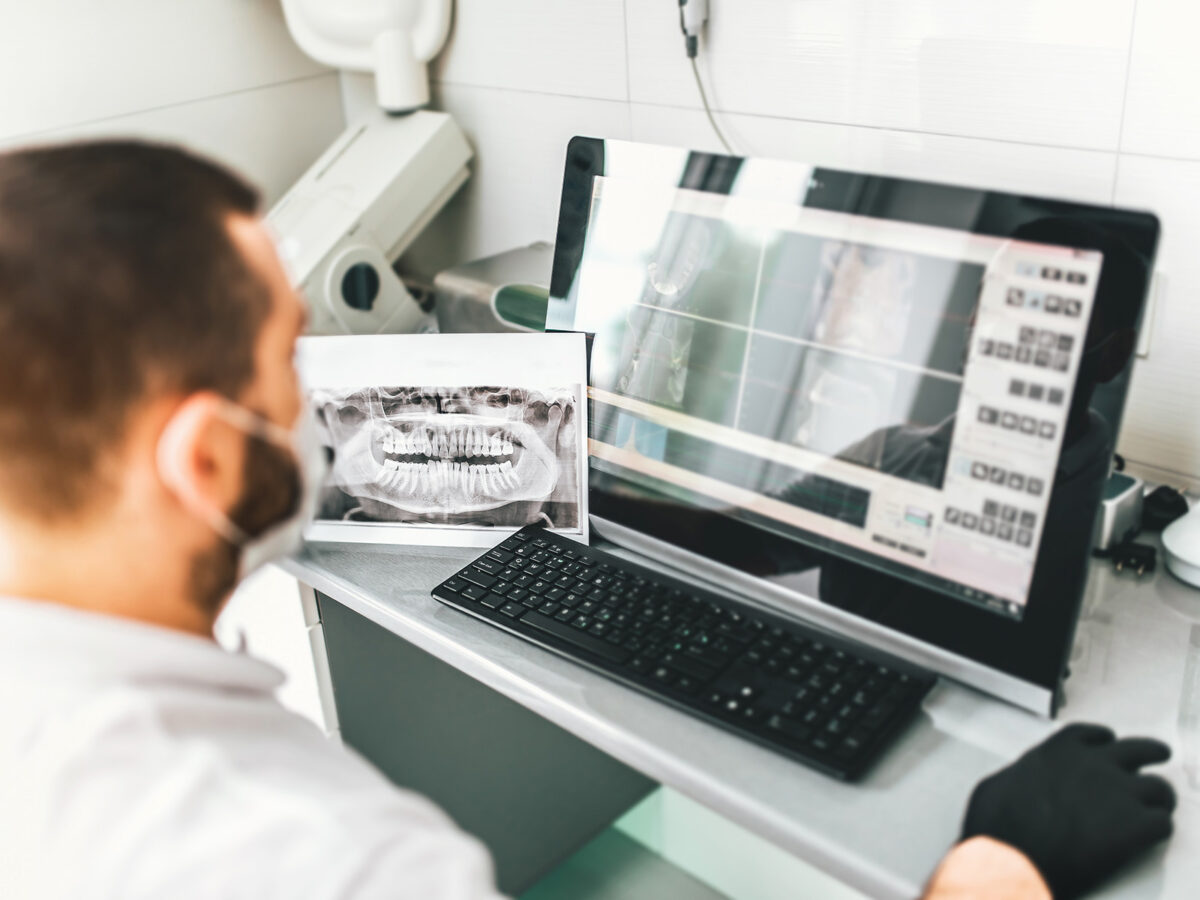Blog
Dental hygiene tips for healthy teeth & gums

How A Dental X-ray Can Help Your Oral Health
Dental X-rays, sometimes called radiographs, are essential to evaluating and monitoring your dental health. Images like this give dentists a look into your teeth, gums, and underlying structures that aren’t visible during a regular exam. Dental X-rays are completely non-invasive, so there’s no need to worry about any discomfort on your part. This article will discuss the importance of dental X-rays and how they can benefit your oral health.
Benefits of X-Rays
- One of the key functions of dental X-rays is to spot cavities in teeth that can’t be seen with the naked eye. X-rays can detect cavities before they cause discomfort or pain and can see through fillings and crowns to reveal decay between teeth. If a hole is found in its earliest stages, a dentist can fill it or perform another restorative procedure to save the tooth from further decay.
- Dental X-rays allow dentists to examine the bone and gums around your teeth and determine their overall condition. X-rays play a crucial role in diagnosing and treating periodontal problems because they reveal symptoms of gum disease, such as bone loss surrounding the teeth. If gum disease is diagnosed and treated promptly, it is possible to avoid tooth loss and other serious issues.
- Dental X-rays are essential for children and teenagers because they allow dentists to track the development of teeth and jaws. Dentists can use X-rays to spot developing orthodontic problems early on, allowing for prompt application of braces or other orthodontic treatments. Getting an orthodontic evaluation and starting treatment as soon as possible will improve results and result in a healthier, more symmetrical smile.
- Dental X-rays reveal the structures below the gum line, allowing for a thorough examination of the health of the tooth’s roots and nerves. This is crucial for determining whether or not there are any infections or abscesses in the tooth’s root structure. Dentists can save a tooth that has a problem with its root canal if they find it early enough.
- The position and growth of wisdom teeth (third molars) are often evaluated via dental X-rays. Wisdom teeth can cause problems like crowding, discomfort, and infection if not properly aligned, which can be seen on an X-ray. If the X-rays reveal potential issues with your wisdom teeth, your dentist may suggest removing them.
- Dental X-rays are useful for detecting a wide range of anomalies in the teeth, including cysts, tumors, and problems with development. These anomalies can be sent to specialists and treated sooner if identified early.
- X-rays are crucial for treatment planning before undergoing dental operations like dental implants or extractions. Dentists can better see the underlying structures with X-rays, leading to more precise and effective treatments.
Assessing Temporomandibular Joint (TMJ) Health
As seen on dental X-rays, the temporomandibular joint (TMJ) connects the jawbone to the skull. TMJ issues can be diagnosed using X-rays, which can then direct treatment.
Dental X-rays are extremely helpful in monitoring the progression of oral health issues over time. Dentists can see any problems worsening by comparing X-rays obtained at different times.
Maximizing Your Smile’s Potential:
In addition to the advantages above, dental X-rays aid in thoroughly assessing your oral health and catching any problems early. Routine X-rays, regular checkups, and preventative measures can improve oral health and wellness. If your dentist suggests getting X-rays done, do it. They’re crucial to getting the greatest care and maintaining a healthy, beautiful smile for the long haul.
Wrapping Up
In conclusion, dental X-rays are crucial in routine dental treatment and emergencies. They give you important data that can be used to spot and treat dental problems before they worsen, protecting your smile for the long haul. X-rays ensure good dental health by allowing dentists to view what’s happening below the gum line and evaluate the teeth, gums, and supporting structures.


